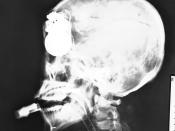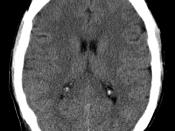Radiographers produce x-rays films of parts of the overall human body to find medical problems. They prepare patients for examinations by explaining the procedure, removing articles such as jewelry, through which x-rays cannot pass, and positioning patients so that the correct parts of the body can be radiographed. To prevent unnecessary radiation exposure, technologist surround the exposed area with radiation protection devices, such as lead shields, or limit the size of the radiation beam. Radiographer's position radiographic equipment at the correct angle and height over the appropriate are of a patient's body. Using instruments similar to a measuring tape, technologist may measure the thickness of the section to be radiographed and set controls on the machine to produce radiographs of the appropriate density, detail, and contrast. They place the x- ray film under the part of the patient's body to be examined and make the exposure. They then remove the film and develop it.
About 75% of all general radiographs are employed in hospitals. The x-ray mobile equipment allows the radiographer to work in the emergency room, operating room, and all patient's bedside. Some work in specialized imaging centers, urgent car clinics, private physician offices, manufacturing plants, public health service facilities, and research centers. Most work 40-hrs a week and may have on call hours in the evenings, nights and or on weekends.
Radiographers job outlook is expected to grow by 35% through the year 2005 as new uses are found for imaging technologies on the diagnosis and treatment of diseases. Right now there is 166, 915 workers in this field.
In large intuitions, they may specialize in a particular population, such as trauma radiology, pediatric radiology, or cardiovascular-interventional radiology.
There are opportunities for advancements to administrative and supervisory positions such as chief technologist or technical administrator.


